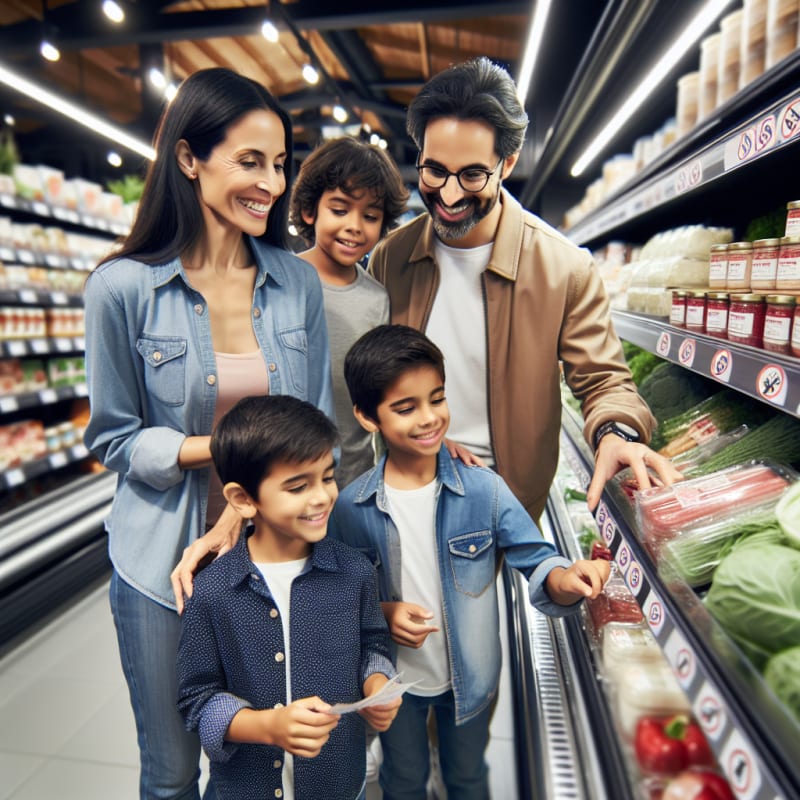How To Know If Food Contains Animal Products?
By The New York Times Style Desk | Updated 2025
It started with a bowl of pasta. When Sarah’s seven-year-old son, Liam, began itching after dinner, she scanned the spaghetti sauce label, searching for clues. Was it the cheese? A hidden animal-derived thickener? For parents, vegans, and those with food sensitivities, the question—how to know if food contains animal products?—is more than academic. It’s a daily concern, one that shapes shopping trips, restaurant orders, and family meals.
Understanding Animal-Derived Ingredients in Everyday Foods
Animal products can be found in obvious forms—meat, dairy, eggs—but also in less expected places. Many processed foods contain ingredients derived from animals, such as gelatin, casein, whey, and certain food colorings.[1]
- Gelatin: Common in candies, marshmallows, and yogurt. Made from animal collagen.
- Casein & Whey: Milk proteins found in many baked goods, sauces, and snacks.
- Carmine (E120): A red coloring made from insects, used in juices and candies.
- L-cysteine: A dough conditioner sometimes sourced from poultry feathers.
For those with allergies, religious dietary needs, or ethical concerns, identifying these ingredients is crucial. Yet, the answer to how to know if food contains animal products? is not always straightforward.
Labeling Laws: U.S. vs. Europe
| Region | Labeling Authority | Animal Ingredient Disclosure | Allergen Rules |
|---|---|---|---|
| United States | FDA | Animal-derived ingredients must be listed by common name, but not all sources (e.g., “natural flavors”) are specified.[2] | Major allergens (milk, eggs, fish, shellfish) must be disclosed. |
| European Union | EFSA | Stricter rules: E-numbers and animal sources must often be declared.[3] | Allergens must be highlighted in the ingredient list (bold or different font). |
In the U.S., the FDA requires clear labeling of major allergens, but not all animal-derived additives are obvious. Terms like “enzymes” or “natural flavors” may conceal animal origins.[4] In the EU, the EFSA enforces stricter ingredient transparency, and E-numbers (such as E120 for carmine) are often used.
How To Read Ingredient Labels for Animal Products
-
Scan for common animal-derived ingredients:
- Milk, eggs, honey, gelatin, whey, casein, rennet, carmine (E120), shellac, isinglass
- Look for allergen statements: In the U.S., ingredients like milk, eggs, and fish are highlighted in a “Contains” statement.
- Watch for ambiguous terms: “Natural flavors,” “enzymes,” and “emulsifiers” may be animal- or plant-derived.
- Check for vegan/vegetarian certification: Seals from organizations like the Vegan Society or American Vegetarian Association indicate the absence of animal products.
For a more detailed guide, see the FDA’s Food Labeling Guide.
Q&A: How To Know If Food Contains Animal Products?
Q: What are the most common hidden animal ingredients?
A: Gelatin, casein, whey, carmine (E120), and L-cysteine are frequently used in processed foods and may not be obvious from the product name.
Q: Are “natural flavors” always plant-based?
A: No. “Natural flavors” can be derived from animal or plant sources. Contacting the manufacturer or using a food scanning app can help clarify.
Q: How can I quickly check if a product is vegan or vegetarian?
A: Look for official vegan or vegetarian certification logos. Alternatively, use a scanning app like Food Scan Genius for instant answers.
How Food Scan Genius Empowers Shoppers
Technology now makes it easier than ever to answer the question: how to know if food contains animal products? The Food Scan Genius app (scangeni.us) allows users to scan any packaged food barcode and instantly see if it contains animal-derived ingredients.
- Instant ingredient analysis: Scan barcodes for real-time breakdown of animal, plant, and allergen content.
- Personalized filters: Set dietary preferences (vegan, vegetarian, kosher, halal, allergy-specific) for tailored results.
- Global database: Covers products from the U.S., EU, and beyond—helpful for travelers and expats.
- Regulatory info: Highlights differences in labeling laws by country and region.
User Testimonial: “As a parent of a child with egg and dairy allergies, Food Scan Genius has been a lifesaver. I can scan anything at the store and know instantly if it’s safe. It even explains confusing ingredients. I recommend it to every family!” — Maria G., Berlin
Download Food Scan Genius here to make shopping safer and simpler.
Scientific Insights: Why Ingredient Transparency Matters
Studies have shown that food allergies and intolerances are on the rise globally.[5] The U.S. Centers for Disease Control and Prevention (CDC) reports that 1 in 13 children now have food allergies, making clear labeling and ingredient awareness essential.[6]
In Europe, the EFSA has pushed for more transparent food labeling, leading to reduced accidental allergen exposures.[7] News outlets like The Guardian and The New York Times have highlighted both the progress and ongoing challenges in food ingredient transparency.
Practical Tips: Navigating Food Choices at Home and Abroad
- Learn key ingredient names and E-numbers (see tables above).
- Use trusted apps like Food Scan Genius to scan and verify products, especially when traveling.
- Contact manufacturers if in doubt—many have hotlines for ingredient questions.
- Shop at specialty stores with clear vegan/vegetarian sections.
- Follow news updates on food labeling regulations in your region.
FAQ: How To Know If Food Contains Animal Products?
A: Use a food scanning app or contact the manufacturer directly for clarification.
A: In some regions, yes. The EU has stricter definitions than the U.S. Always check for official certifications.
A: Yes, the app includes filters for kosher, halal, and other dietary preferences.
Conclusion: Empowering Choices with Knowledge and Technology
For Sarah and families like hers, understanding how to know if food contains animal products? is not just about reading labels—it’s about peace of mind. With tools like Food Scan Genius and a growing awareness of global labeling laws, consumers can make safer, more informed choices every day.
Whether you’re shopping in New York, London, or Berlin, ingredient transparency and smart technology put control back in your hands. Download Food Scan Genius today and take the guesswork out of your next meal.





